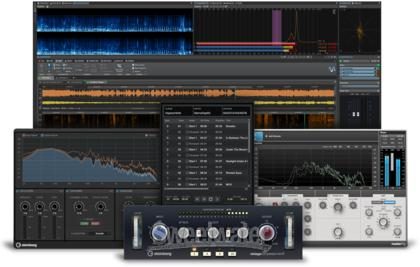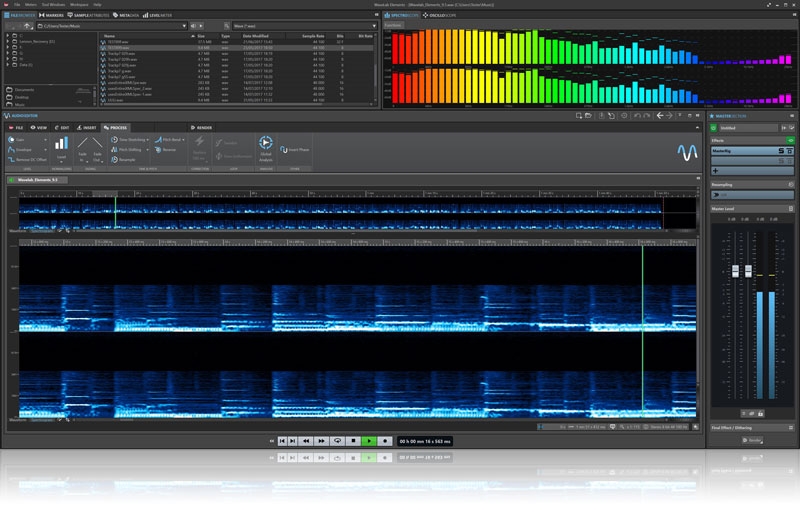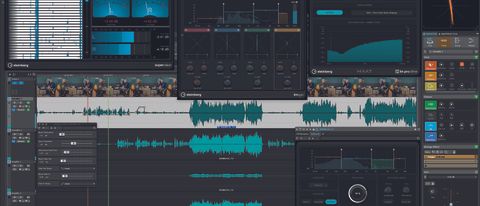

#LEFT RIGHT BALANCE IN WAVELAB 8.5 ARCHIVE#
Over the course of the project I have dipped into many of our Sound Archive collections and by doing so I have learnt a lot about Essex’s heritage though oral history, music, radio broadcasts and videos. It’s been a journey that has involved digitising analogue formats using many different vintage players along with digital interfaces to ensure the best digital version of the original source. It’s hard to believe that almost three years have gone by since I started working on the You Are Hear (YAH) project. Posted in Archives, Collections | Tagged Bobbingworth, Jamaica, slavery You Are Hear: behind the scenesĬatherine all smiles at the beginning of the project ensconced in one of our sound studios

Seeing this list of people ‘owned’ by other people is a chilling experience, and reminds us that much of the wealth of Britain at that time was built on the horrendous practices of enslavement.Ī search on Essex Archives Online for the word ‘slave’ brings up 76 results there are plenty of other stories relating to this dark period in our history waiting to be uncovered. Stella Allen had already died by this point, and the compensation for the slaves she had owned was paid to her executor, Capel Cure of Blake Hall in Bobbingworth (detailed in Stella Freeman’s entry on the Legacies of British Slave-ownership project).

The British government granted £20 million in compensation, to be paid by British taxpayers, not to the slaves themselves, but to the slave owners who were losing their ‘property’. Some of the very young children listed on the 1817 scheduleĮven though the slave trade had been abolished in Britain in 1807, the whole system of slavery in British-held territories was not abolished until 1833. One enslaved man, John Whitfinch, was named but noted to have ‘run away since 1818’. The reasons for deaths are given, including fever, old age, ‘mal d’Estomac’ (literally, a ‘bad stomach’), tetanus, and dropsy. The 1820 schedule notes that since 1817 there had been 21 births and 28 deaths amongst the enslaved people on the plantation. In 1817 there were 355 enslaved people engaged in forced labour on the estate – 182 men and 173 women – and in 1820 there were 348. There are actually two lists, or schedules, in the document one from 1817 and the other from 1820. One man, John Williams, aged 55, is described in this column as ‘American’.

whether in Africa, or in the West Indies.
#LEFT RIGHT BALANCE IN WAVELAB 8.5 SKIN#
The fact that people were categorised in this way based on the colour of their skin, and the skin colour of their ancestors, is deeply uncomfortable to read today, but provides a stark insight into the mindset of the time.Īnother column, titled ‘African or Creole’, gives an indication of where each person was born, i.e. ‘Quadroon’: a person with one Black grandparent.‘Mulatto’: a person with one white parent and one Black parent.It could also be used to mean someone who had one ‘Negro’ parent and one ‘Mulatto’ parent. ‘Sambo’: this word seems to have several meanings, and was often used as an offensive nickname for Black people.‘Negro’: a person of Black African origin or descent.These terms were used at the time to categorise people based on their skin colour and ancestry definitions for these terms are given in the Oxford English Dictionary as follows: In the ‘color’ column, people are listed as being either ‘Negro’, ‘Sambo’, ‘Mulatto’, or ‘Quadroon’ – terms which today are considered offensive and have fallen out of use. The document lists the names, ‘color’, and ages of the enslaved people forced to work on the estate, and whether there were born in Africa or the West Indies


 0 kommentar(er)
0 kommentar(er)
